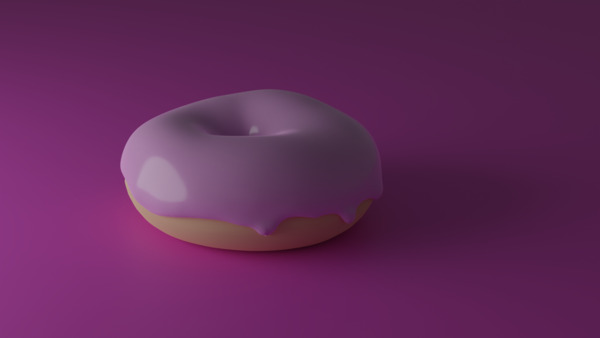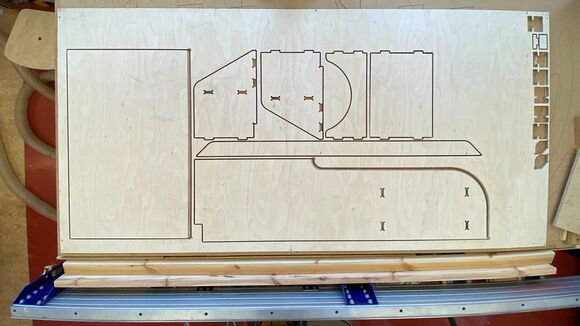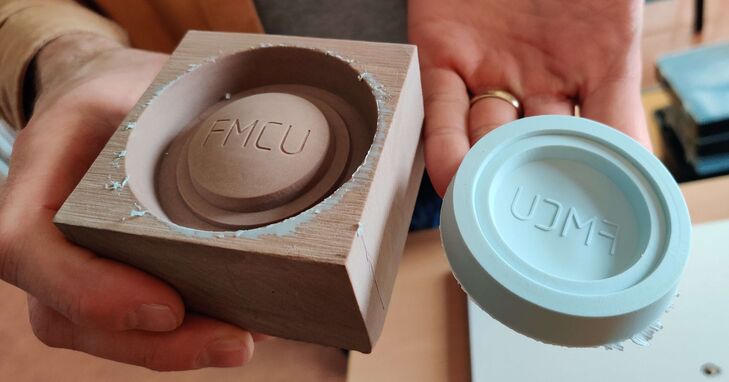Svavar's Fab Academy Journey 

Hi
My name is Svavar Konráðsson. Welcome to my home on the web.
This is the living and evolving documentation of my studies at the amazing Fab Academy, class 2023. I have the good fortune to work at Fab Lab Ísafjörður, Iceland. My instructor is Þórarinn Bjartur Breiðfjörð Gunnarsson, director of Fab Lab Ísafjörður. My global evaluator is Pablo Nuñez, a part of the dream team at Fab Lab León.
If you're technically inclined, you may find some useful stuff on this site. The documentation is lengthy and seems chaotic; but that's because we're encouraged to document everything as we go along, mistakes and all. The best resource for a Fab Academy student is the documentation from other Fab Academy students.
Final Project
My final project in the Fab Academy is Baksi the educational robot.
Baksi is meant to be small, inexpensive, simple and safe. You can see all the electronics, and yet it has a clean look. You can make one yourself in a Fab Lab anywhere in the world, and the local staff will help you learn the skills that you need to pull it off. So, what are you waiting for?
Get started building a BLDC robot from scratch

A big part of modern technology is in this robot in one way or another; microchips that control motors and communicate with each other, digitally fabricated parts, software to control the robot from the computer and more. I want to use this little bot to get students interested in mathematics and technology. And maybe paint candles.
1 minute video about Baksi:
I was invited to participate in How to Make Something that Makes (almost) Anything in the spring of 2024! I'm making Baksi more capable there:
Baksi on my MIT Machine Class page
Fab Academy Assignments
What is the Fab Academy?
First thing: The Fab Academy is open for anyone who wants to make things. There are no prerequisites, and it's basically the same as the legendary MIT class How To Make (almost) Anything. Because of the world wide network of Fab Labs, anyone in the world can apply to the Fab Academy and drink from the firehose of cutting edge technology and whimsical stories that is Professor Neil Gershenfeld, the director of the MIT Center for Bits and Atoms.
The Fab Academy is the most remarkable educational program I know of. Every year, engineers like me, artists with no technical background, PhD students, high school students and students of the school of life meet up online every Wednesday for the Fab Academy class. Everyone starts at different levels and everyone is required to go outside their comfort zone every week. I'm familiar with mechanical CAD, so in CAD week I tried artistic polygon modeling in Blender. After Neil's dizzying lecture on the week's subject, you have until next Wednesday to make something that works, and document it thoroughly.
I spoke about my Fab Academy experience to new students at the 2024 Student Bootcamp:
 My advice to Fab Academy students (I made a robot and I almost went mad)
My advice to Fab Academy students (I made a robot and I almost went mad)
My experience? It was like getting an acceptance letter into Hogwarts. A vast world opens up to you full of outstanding people who, working together, can make (almost) anything. You have the support of a group of unassuming people around the world who are actually technology wizards, but also appreciate the human element in art and design. It's the only online school where I've actually got to know the people taking part in it.
 The evolution of my electronics design skills over the course of the Fab Academy. The course puts a heavy emphasis on digital electronics, because that's what makes things come alive!
The evolution of my electronics design skills over the course of the Fab Academy. The course puts a heavy emphasis on digital electronics, because that's what makes things come alive!
Already I've made a contribution to a Spanish-Icelandic project and I'm only just getting started in the Fab Lab network. I've made friends, laughed and cried and yet the Fab Academy somehow only exists inside my laptop and I struggle to convey how significant this thing is to outsiders. Currently there are 2500 places like this in the world where I can now walk in and start making things (and so can you!) and share stories of struggling to make things work. And the number of Fab Labs in the world doubles every 18 months. Isn't that wild? Something's going on here.
 I had a fun meeting with Team FMCU. See my contribution here.
I had a fun meeting with Team FMCU. See my contribution here.
The Fab Academy has existed in a side reality for a long time, but it's invisible to Muggles. They have their peculiar speech and conventions that are impenetrable to outsiders. They've been videoconferencing since ancient times. You Google the Fab Academy and find a cryptic website full of bare HTML links to technical resources without any explanations. Ah, my friend, but you lack the guidance and the context! Come on in. Check out the meme channel in the Mattermost chat.
 Þórarinn, the undisputed Fab Academy meme master. See an example at the bottom of this page. Image from Adrián Torres.
Þórarinn, the undisputed Fab Academy meme master. See an example at the bottom of this page. Image from Adrián Torres.
An introduction to modern technology as we know it might realistically be taken on in a ten-year period, but we rush through it in six months. You'd better keep up, because you need to make microcontroller boards that talk to each other- wait, now you must mill a 3D shape and make a casting- hold on, now it's time for web programming, but lay that to one side because now you need to stay up all night to finish your final project and present it to hundreds of faces on your laptop screen that are in all time zones and climates and circumstances in the world and you are now a part of this group, which shares a traumat- I mean a transformative experience.
 The Icelandic students in Fab Academy 2023: Yours truly, Andri Sæmundsson and Hafey Viktoría Hallgrímsdóttir.
The Icelandic students in Fab Academy 2023: Yours truly, Andri Sæmundsson and Hafey Viktoría Hallgrímsdóttir.
Two out of three Icelanders taking the Fab Academy this year got sick right after their final project presentation, because the pressure had been so high. Was it worth it? It actually was. I would hardly dare make electronics before but now I'm considering taking an electronic product to market.
There is a before and after the Fab Academy. I now know how an aluminum profile feels. You know, they don't heat the material that much, they just push it with enormous force until it deforms and takes on the shape of the die. Before I was a disorganized scatterbrain. Now I'm a disorganized scatterbrain who designs nifty things in spirals and documents everything, not because I'm being forced to do it anymore but because I enjoy the process. What is happening to me?
Becoming an instructor
 The 2024 Fab Academy Instructor Bootcamp in León, Spain. My contributions: BLDC Modular Thing and Chat with your repo. Image from Frosti Gíslason.
The 2024 Fab Academy Instructor Bootcamp in León, Spain. My contributions: BLDC Modular Thing and Chat with your repo. Image from Frosti Gíslason.
Pre Fab
I've set up Iceland's first Pre Fab course:
Pre Fab (You'll have to translate the page)
I think it's essential that prospective Fab Academy students try a few things before starting the course itself, so that they know what they're getting into! Before I started the Fab Academy, Þórarinn taught me to mill on the ShopBot, Hafliði walked me through making a simple capacitive sensor and Árni helped me set up a website. It was unplanned and informal, but it helped me a lot.
I've also been scratching my head over how Tom Dubick takes a cohort of high school students through the Fab Academy every year. We need at least one Tom in every country. I noticed in his students' documentation that they go through a short Pre Fab course before starting the Fab Academy. So I thought it couldn't hurt to try it here, too.
CAD
I'm trying my hand at distilling CAD principles in the style of Neil's one minute videos:
Boards for Fab Academy
SAMD21
To popularize my favorite microcontroller, I'm working on a breadboard-friendly board:
SAMD21 is a modern chip that you can solder by hand! I picked it so that my students won't run into limitations in memory or peripherals. It has a nice analog-to-digital converter for sensors and you can program it with the friendly CircuitPython.
For Fab Academy 2025 it might also be useful to make something similar to Daniele Ingrassia's satshakit, but with the SAMD21.
BLDC Modular Thing
I intended the BLDC Modular Thing to be a part of the modular-things ecosystem, but I haven't figured out how to connect it to the modular-things web interface.
But this is a nice control board for a gimbal BLDC motor with an integrated encoder. You program it in the Arduino IDE using the SimpleFOC library and then you can send it position commands over a serial connection. The motor holds its position, even when you mess with it:
How to make and use the BLDC Modular Thing
Primary school
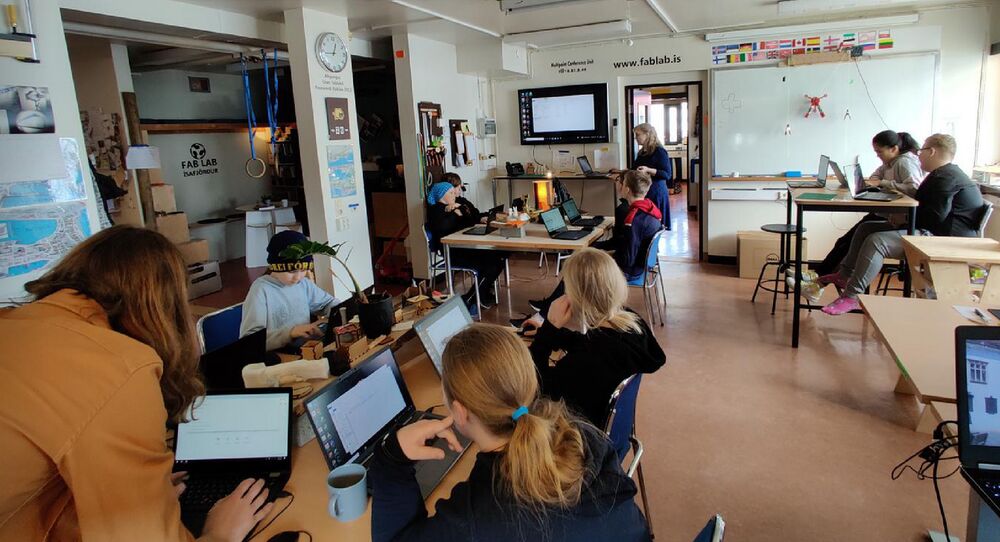
I received a group of primary school students who were interested in 3D printing, so I showed them TinkerCAD and asked if they had email addresses to sign up. Some did, some couldn't remember, I opened up the Part workbench in Ondsel instead and showed them how to make basic shapes, resize and move them to assemble what they wanted. After a little less than two hours, they had produced this:
 Primary school student designs in Ondsel ES!
Primary school student designs in Ondsel ES!
I'm working on a soldering exercise for primary school kids:
Secondary school
Inspiration
One of my robots giving a student a sip of water from a glass.
Digital fabrication

CAD
I used to be prejudiced against free and open source engineering software, but I changed my mind during the Fab Academy. Now I teach CAD using the Part workbench in FreeCAD, which I find simpler and more powerful than the more popular Part Design workbench.
 Link to the Fab Lab Ísafjörður Youtube channel
Link to the Fab Lab Ísafjörður Youtube channel
The LCInterlocking workbench in FreeCAD is great for milling and laser cutting furniture that snaps together. It hasn't been maintained for a few years, so it might be worth forking; to enable parametric input and fix a few minor things.
 Part of the furniture that my students made in the fall of 2024.
Part of the furniture that my students made in the fall of 2024.
When I realized that FreeCAD is a capable CAD program, I no longer needed Windows. So I've been using Linux Mint since March of 2024 (my settings) and Þórarinn joined me in the fall. Mint is the friendliest distro.
Electronics
 Circuits for final projects.
Circuits for final projects.
Making a board with two Neopixels is enough to learn how addressable LEDs work.
Machine building
Two groups of students made Beehive axes by Quentin Bolsée and the stepper modular-thing machine controller.
Final projects
| Small cupboard with access control. It uses Nicholas De Coster's USB Quick Charge hack to supply the solenoid lock with 12V from a small USB power supply (one port, two ports). |
|---|
 UFO table with a rotating tray.
UFO table with a rotating tray.
This finger joint box senses the lid using a magnet and a Hall sensor.
An acrylic lamp with 60 individually soldered Neopixels.
From the Fab Lab network
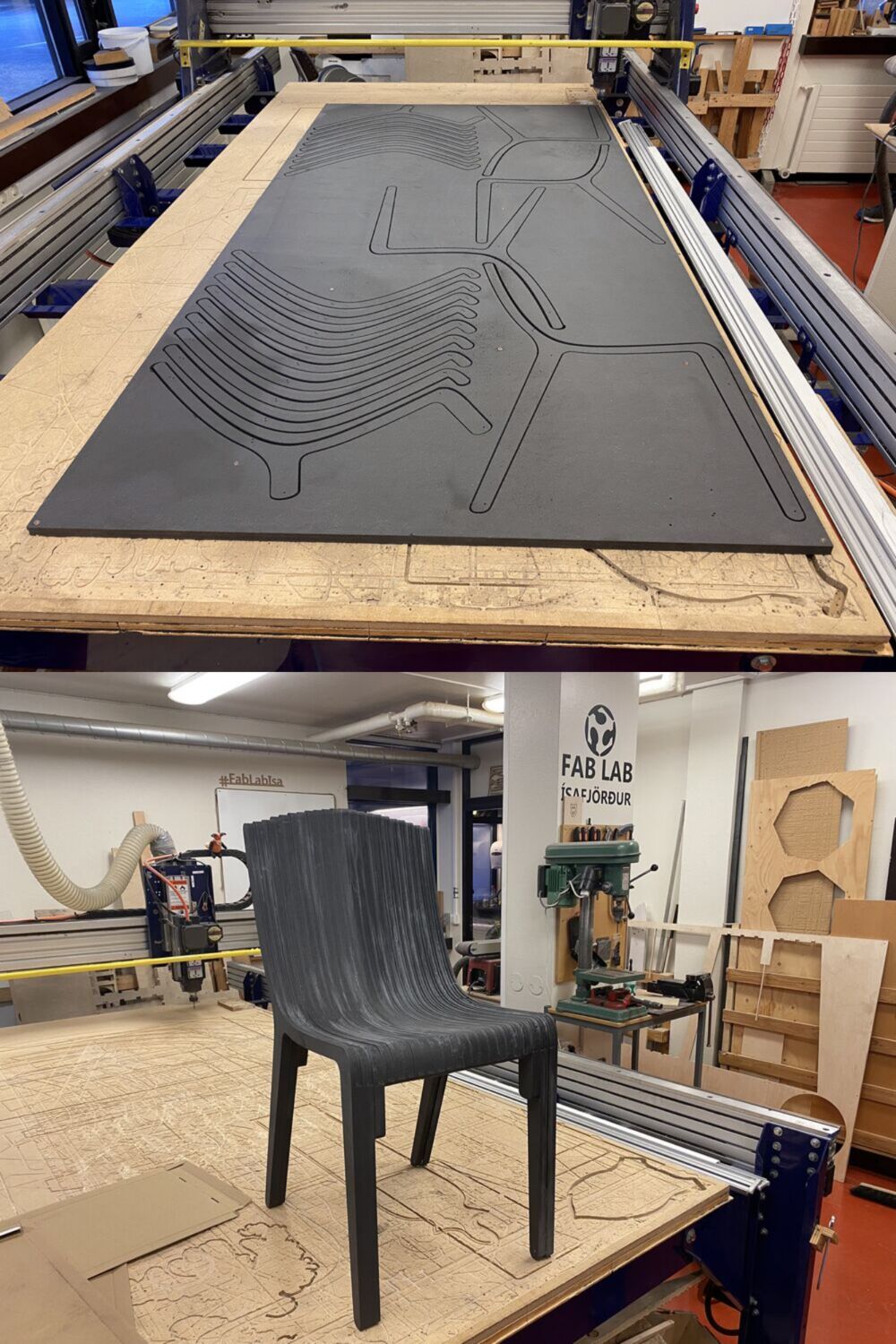 The Layer Chair - Amsterdam edition by Jens Dyvik, made by a 17 year old student.
The Layer Chair - Amsterdam edition by Jens Dyvik, made by a 17 year old student.
My rune
This is the rune that I made for myself in grade school, made up of my initials SK. To start my Fab Academy journey, I made it digital, using Inkscape.

